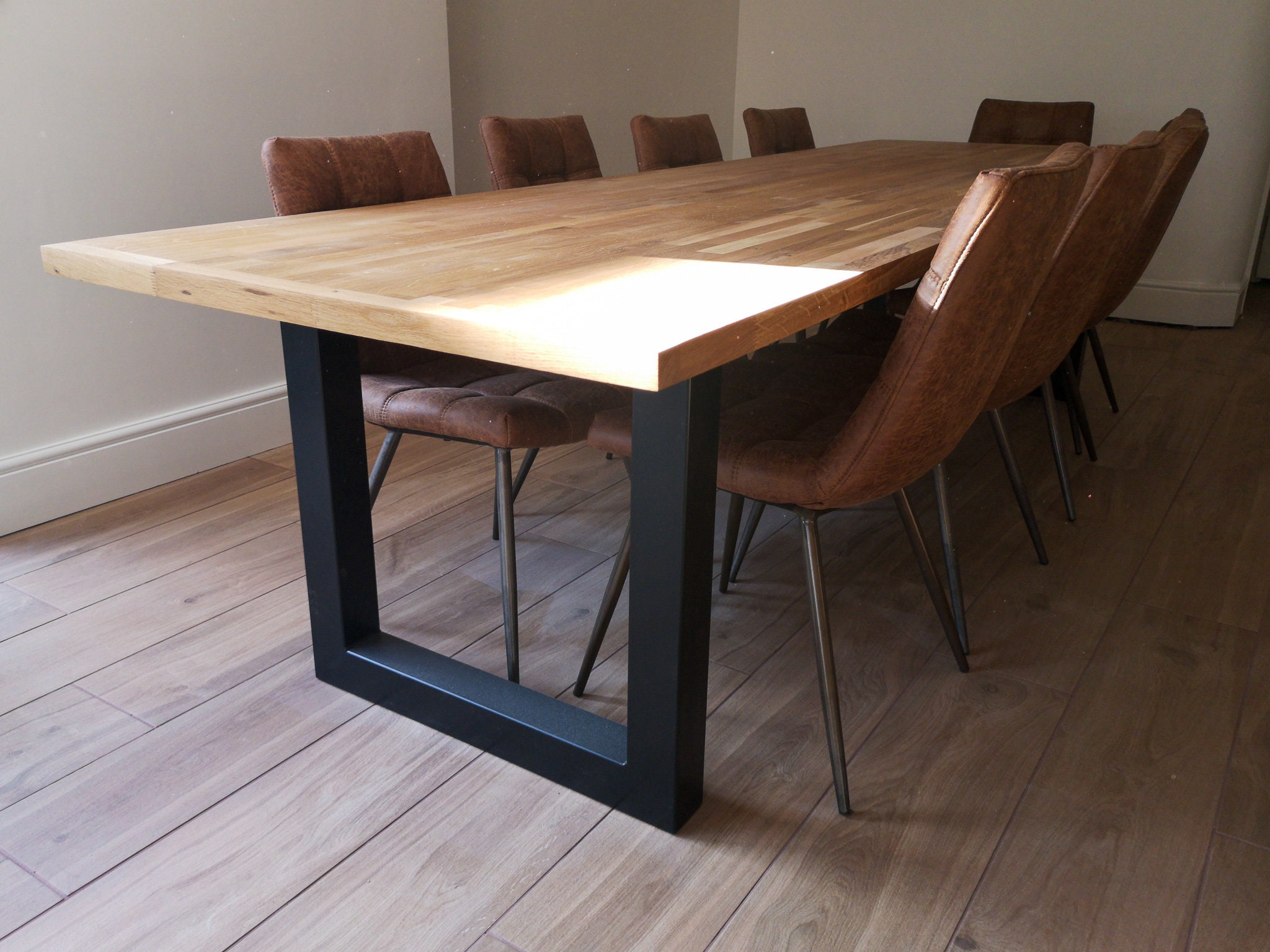Checking Out Different Layouts for Dining Room Table Legs to Match Your Visual
Checking Out Different Layouts for Dining Room Table Legs to Match Your Visual
Blog Article
An In-depth Consider Eating Table Leg Styles: Discovering the Perfect Suit
Selecting the best dining table leg style is crucial for both aesthetic allure and functional performance. For those with bigger tables, trestle legs make certain durable support, whereas hairpin legs present a mid-century modern vibe with their minimalist layout. The x-shaped legs blend contemporary style with enhanced security.
Typical 4 Legs
Amongst the different kinds of dining table leg styles, the standard four-leg design continues to be an ageless choice for many households. Four legs provide well balanced support, ensuring the table remains secure and capable of bearing substantial weight (dining room table legs).
From a visual perspective, the typical four-leg style can be conveniently adjusted to numerous interior designs. Whether crafted from timber, metal, or a mix of materials, these legs can be delicately carved, streamlined and minimalistic, or anything in between. Their flexibility permits them to match both rustic and modern settings seamlessly.
In addition, the uncomplicated structure of the four-leg style assists in simplicity of motion and placement within an area. Unlike even more complicated bases, this style decreases obstructions, offering ample legroom for diners. In summary, the traditional four-leg eating table leg design marries withstanding sophistication with sensible functionality, making it a sharp choice for those looking for both form and function in their dining furniture.
Stand Base
Commonly celebrated for its elegant and space-efficient design, the pedestal base is a prominent alternative to the traditional four-leg setup in table leg styles. This unique base usually features a single central column supporting the table top, which can differ in form, from ornately carved wood to smooth, modern-day metal. Among the main benefits of the stand base is its capacity to make the most of legroom and seating versatility. Without corner legs, restaurants are afforded better flexibility of motion, making it a perfect choice for round and oval tables that promote more intimate and comprehensive events.
The central column itself supplies a canvas for intricate layouts and imaginative expressions, including a component of visual passion below the table. In summary, the stand base combines capability with style, making it an improved and functional option for diverse eating settings.
Trestle Legs
Trestle legs provide a durable and classic foundation for eating tables, characterized by their straight cross-bracing and tough support beams. Stemming from medieval times, this style has actually developed yet retained its essential structure, making it a seasonal favorite in both traditional and modern settings. The main trestle beam, commonly supported by 2 or even more upright posts, supplies extraordinary stability, permitting for bigger table sizes without the demand for extra legs.
A substantial advantage of trestle leg tables is the enough legroom they provide. Unlike tables with four edge legs, the absence of obstructions at the table's sides supplies unblocked space for chairs and restaurants, enhancing comfort and access. This makes trestle tables perfect for accommodating larger events, whether in a dining space or a reception hall.
The visual flexibility of trestle legs is notable. Offered in a variety of materials such as wood, steel, and composite, they can be completed to complement a large range of indoor styles. From rustic farmhouse to smooth modern designs, trestle legs can be customized to suit specific preferences. Their long-lasting appeal and practical advantages make trestle legs an engaging choice for those looking for both style and practicality in their visit homepage dining table.
Hairpin Legs

The allure of barrette legs hinges on their simplicity and adaptability - dining room table legs. Offered in a variety of products, consisting of steel and brass, they can be ended up in various shades to complement various interior styles. Whether coupled with a rustic wooden table top or a contemporary glass surface area, barrette legs effortlessly blend functionality with a touch of classic beauty
Sturdiness is an additional remarkable feature of barrette legs. Regardless of their fragile look, these legs are engineered to birth substantial weight, making sure the dining table stays secure and safe and secure. Furthermore, they are relatively very easy to set up, making them a preferred over at this website selection for DIY lovers and expert furnishings makers alike.
X-Shaped Legs

Constructed from materials such as steel, timber, or a combination of both, X-shaped legs can be tailored to match numerous design preferences. Steel legs frequently offer a sleek and industrial feeling, perfect for loft-style homes and modern dining rooms.
Additionally, the engineering behind X-shaped legs ensures even weight distribution, minimizing the risk of tottering and enhancing resilience. This makes them specifically fit for bigger table that call for added support. Basically, X-shaped legs mix functional design with modern-day looks, making them a timeless option for diverse dining environments.
Conclusion
A thorough understanding of eating table leg designs discloses the distinctive characteristics and advantages of each design. Trestle legs guarantee robust assistance for larger tables, and barrette legs present a mid-century modern visual.
Report this page